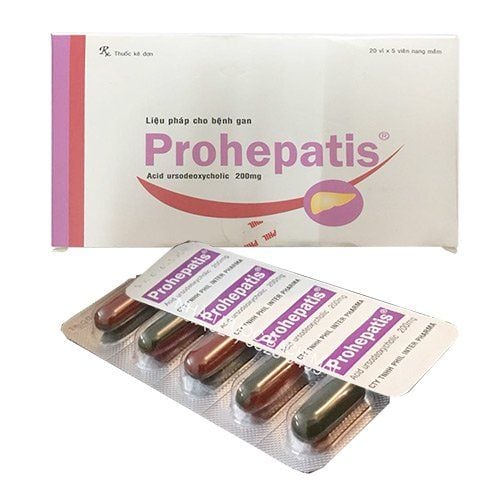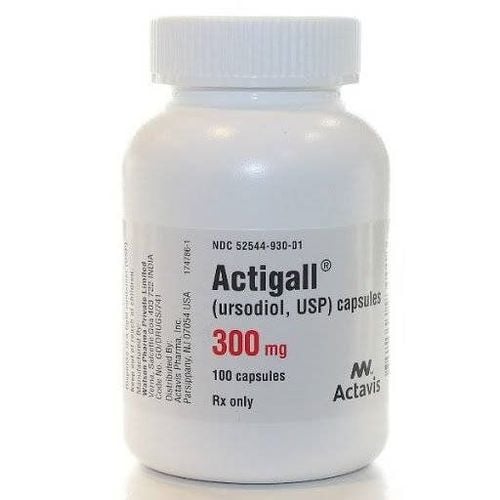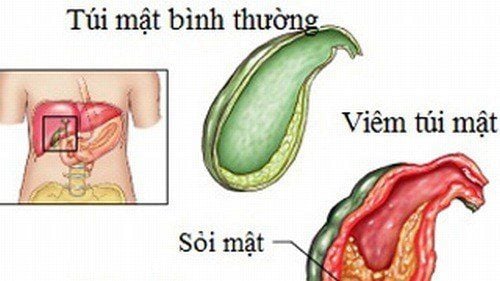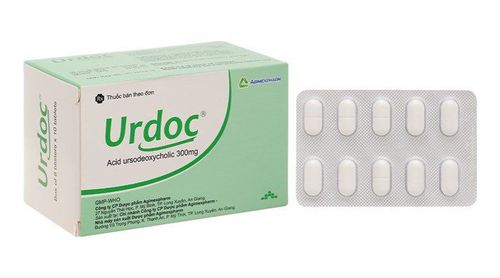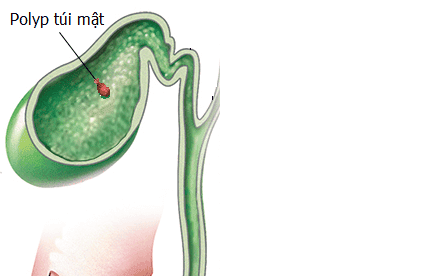This is an automatically translated article.
Posted by Dr. Do Minh Hung - Head of General Surgery Department, Vinmec Central Park International General Hospital.Gallstones are rock-like objects, which can be as small as a grain of sand or as large as an egg, that form in the gallbladder. Depending on the symptoms, people with gallstones may have different treatment options.
1. What is the gallbladder?
The gallbladder is an organ similar to a small pear located under the liver on the right side of the abdomen. The function of the gallbladder is to store and expel bile, a liquid produced by the liver and to help digest fats in the foods you eat. Bile is made up of many substances, including bilirubin and cholesterol.
The gallbladder is connected to the liver and intestines by ducts, including the hepatic duct, the cystic duct, and the common bile duct. When you eat, the gallbladder contracts to push bile through the common bile duct into the intestine to help digest food, especially fatty foods.
2. What are gallstones?
Gallstones are not actually stones (stones) but a solid form that is formed in the gallbladder due to the supersaturation of one of the three components of bile, cholesterol, gallbladder pigment, and calcium salts. You don't even know you have a gallstone until it becomes blocked in the cystic duct, causing pain and requiring immediate treatment.3. What are the symptoms of gallstones?
In many cases, people with gallstones with no symptoms are called "silent stones." The risk of developing symptoms increases by 1-2% per year.
The main symptom of gallstones is pain, which can last from a few minutes to several hours. Pain can occur when gallstones move from the gallbladder into a tube (cystic duct, hepatic duct, and common bile duct).
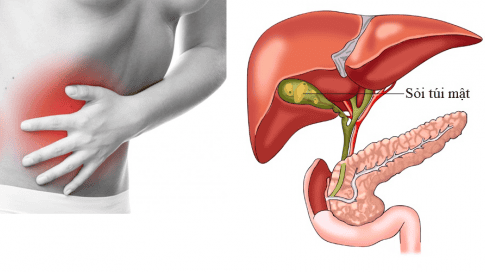
Đau vùng trên bụng lan ra sau lưng, đau có thể kéo dài từ vài phút đến vài giờ cảnh báo bệnh sỏi mật
The pain may be localized in the upper part of the abdomen (epigastric or lower right flank) radiating to the back, radiating between the shoulder blades or below the right shoulder. Epigastric pain after a full, fatty meal is sometimes misdiagnosed as gastritis.
Other symptoms of gallstones include: Sweating, vomiting, fever, jaundice
4. How are gallstones formed?
Gallstones can happen when:
Your bile contains too much cholesterol. Normally, your bile has enough substance to dissolve cholesterol excreted by the liver. But if the liver excretes more cholesterol than bile can dissolve, the excess cholesterol can form crystals and eventually stone. Your bile contains too much bilirubin. Bilirubin is a substance that is produced as soon as red blood cells in your body are broken down. Some diseases cause the liver to make too much bilirubin, such as cirrhosis, biliary tract infections, and some blood conditions. Excess bilirubin contributes to the formation of gallstones. Abnormal function of the gallbladder to expel bile. If your gallbladder does not empty completely or regularly, the bile can become too concentrated which contributes to gallstone formation (fasting or prolonged parenteral nutrition).
5. Types of gallstones?
Types of gallstones that can form in the gallbladder include:
Cholesterol stones, which usually appear yellow, are composed mainly of insoluble cholesterol, but may contain other components. Brown or black pigment gallstones form when your bile contains too much bilirubin. Black pigment stones are the result of chronic hemolysis and are present only in the gallbladder. Brown pigment stones are associated with bile duct infection and are often present in both the gallbladder and biliary tract. Mixed gravel.

Sỏi mật có thể hình thành nhiều loại khác nhau trong túi mật và đường mật
In Europe and America, the majority of gallstones are cholesterol stones (70-80%), however, cholesterol stones only account for 10%. In Vietnam, the proportions of cholesterol stones, brown pigment and mixed stones are similar.
6. Who is at risk for gallstones?
The following factors increase the risk of developing gallstones :
Women Over age 40 Having a family history of gallstones Being overweight or obese Being pregnant Losing too much weight over a short period Have diabetes Crohn's disease Diets high in fat, cholesterol, and low in fiber People taking cholesterol-lowering medications Taking estrogen-containing medications such as hormone therapy American Indians and Mexicans
7. What are the complications of gallstones?
Complications of gallstones can include:
Cholecystitis : A stone stuck in the neck of the gallbladder can cause cholecystitis. Cholecystitis can cause pain and fever. Common Bile duct Obstruction: Gallstones that fall into the common bile duct block the bile ducts and obstruct the flow of bile from the liver or gallbladder to the intestines causing jaundice and biliary tract infections.
Obstruction of the pancreatic duct: Pancreatic juice aids in the digestive process, flowing through the pancreatic ducts. Gallstones can cause blockages in the pancreatic ducts leading to pancreatitis. Pancreatitis causes severe, ongoing abdominal pain that often requires hospitalization. Gallbladder cancer: People with a history of gallstones have an increased risk of gallbladder cancer. But gallbladder cancer is very rare, so despite the increased risk, the chances of gallbladder cancer are still very low.
Gallstone intestinal obstruction : Gallstones cause chronic inflammation of the gallbladder and adhesion to the duodenum. Over time, stones erode the wall of the gallbladder and duodenum, causing cholecystoduodenal fistula. The stone follows the fistula and falls into the lumen of the duodenum into the small intestine and becomes stuck in the terminal ileum, where it is the smallest in diameter.
8. How are gallstones diagnosed?
Ultrasound is the most commonly used test to detect gallstones.
Other tests that may help in diagnosing gallstones include:
Computed tomography (CT scan) Endoscopic retrograde cholangiopancreatography (ERCP) is performed when associated choledocholithiasis is suspected. to help diagnose and remove stones Magnetic resonance cholangiopancreatography (MRCP) Endoscopic ultrasound (EUS)
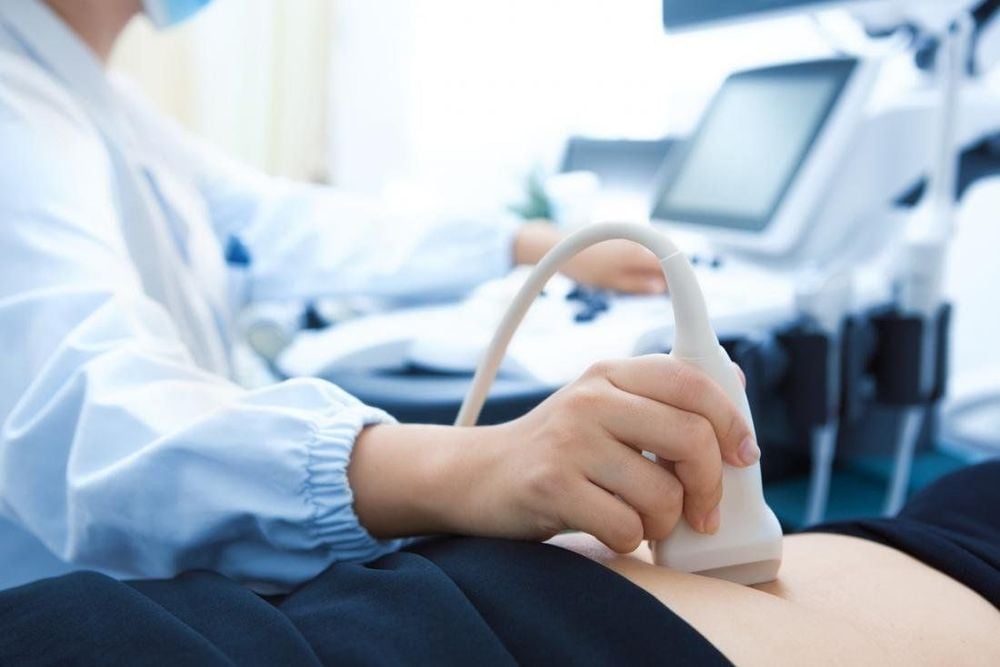
Siêu âm thường được sử dụng nhất để phát hiện sỏi mật.
9. When to see a doctor?
Make an appointment with your doctor if you have any signs or symptoms that worry you. You need immediate treatment if you have signs and symptoms due to a serious complication of a stone, such as:
Abdominal pain so severe that you cannot sit still or find a comfortable position Jaundice and Eyes High fever with chills
10. How are gallstones treated?
In most cases, if you have gallstones but no symptoms, you may not need treatment.
If you have symptoms such as pain, you may need treatment. The most commonly used treatment is surgical removal of the gallbladder. In the vast majority of cases (90%), this surgery is performed laparoscopically.
If the patient has certain complications related to gallstones - such as inflammation, infection, large scarring from a previous surgery, a bleeding disorder or a condition that can make it difficult to perform surgically laparoscopic - the surgeon can remove the gallbladder by open surgery. This process results in a longer hospital stay (3-5 days).
If you have a combined gallstone, the stone needs to be removed in most cases, even if you don't have any symptoms. The most common method for performing this is endoscopic retrograde cholangiopancreatography (ERCP) or performing cholecystectomy in conjunction with laparoscopic cholecystectomy.
11. Can I digest food without a gallbladder?
You don't need a gallbladder to properly digest food. If the gallbladder is removed, bile flows directly from the liver through the hepatic and common bile ducts into the small intestine. After surgery, you will probably have to have more frequent bowel movements and have softer stools for a short time.12. Non-surgical treatment
If a patient does not need surgery, the doctor may prescribe some medicine to dissolve the gallstones. The drugs are made from bile acids and are only used to treat cholesterol stones.
Two drugs used to treat it are ursodiol (Actigall) and chenodiol (Chenix). Patients often have to take these medications for months or even years to dissolve the gallstones. In many cases, gallstones can recur within five years in people taking these drugs.
13. How to prevent gallstones?
You can reduce your risk of gallstones if you:
Don't skip meals. Skipping meals or fasting can increase the risk of gallstones. Lose weight slowly. If you need to lose weight, you have to lose it slowly. Rapid weight loss can increase the risk of gallstones. Aim to lose about 0.5 - 1 kg a week. Maintain a good weight. Obesity and being overweight increase the risk of gallstones. Work towards reaching an ideal weight by reducing the number of calories you eat and increasing the amount of physical activity you get. Once you reach a good weight, maintain that weight by continuing a healthy diet and continuing to exercise.




